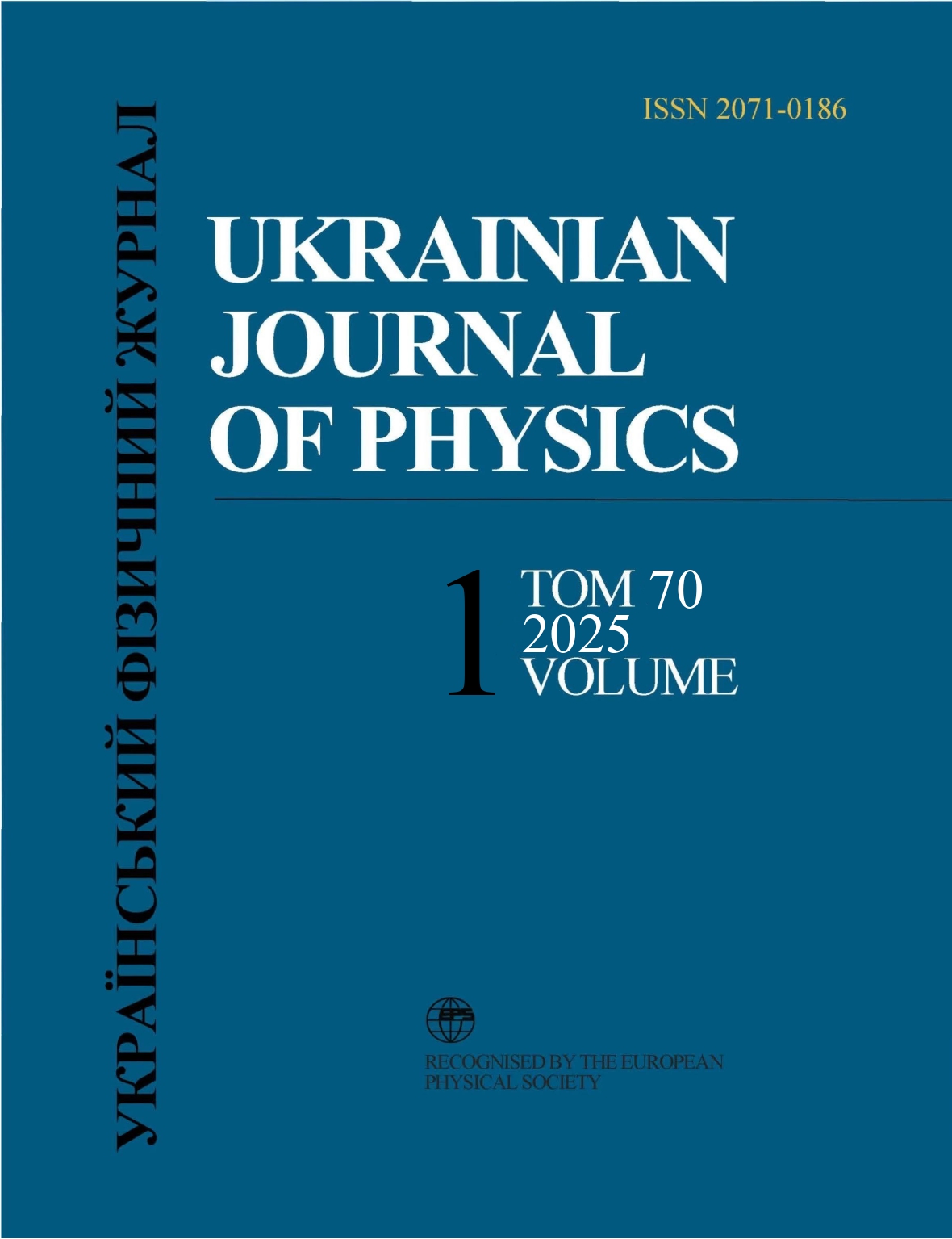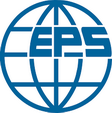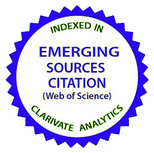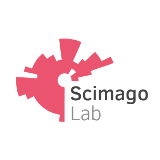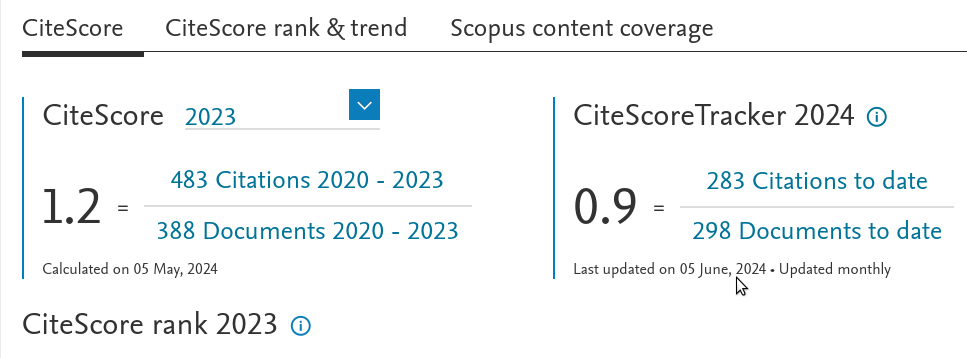Temperature Dependence of the Shear Modulus in Concentrated Polymer Gels: Molecular Mechanism
DOI:
https://doi.org/10.15407/ujpe70.1.42Keywords:
polymer gel, shear modulus, cartilage tissueAbstract
In addition to the conventional entropic mechanism of the temperature dependence of the shear modulus in polymer gels, another one has been found. It is implemented in concentrated rigidchain gels. Such gels were shown to consist of two phases: a network and fibers, with the former phase determining the magnitude of the gel shear modulus. If the temperature increases, the fibers are destroyed; some chains come off the fibers and increase the network phase fraction, thus increasing the shear modulus. Temperature dependences of the shear modulus for gelatin gels with gelatin concentrations c = 12%, 20%, 30%, and 40% were measured in a temperature interval of 34–42 ∘C. They are consistent with the proposed mechanism. We will also show that this mechanism of the temperature dependence of the shear modulus is responsible for the temperature effect on the regeneration of damaged cartilage tissue.
References
M. Karg et al. Nanogels and microgels: From model colloids to applications, recent developments, and future trends. Langmuir 35, 6231 (2015).
https://doi.org/10.1021/acs.langmuir.8b04304
E. Cal'o, V.V. Khutoryanskiy. Biomedical applications of hydrogels: A review of patents and commercial products. Eur. Polym. J. 65, 252 (2014).
https://doi.org/10.1016/j.eurpolymj.2014.11.024
J. Eschweiler et al. The biomechanics of cartilage - An overview. Life 11, 302 (2021).
https://doi.org/10.3390/life11040302
P.-G. Gennes. Scaling Concepts in Polymer Physics (Cornell University Press, 1979) [ISBN: 978-0801412035].
L.A. Bulavin, Yu.F. Zabashta, L.Yu. Vergun, O.S. Svechnikova, A.S. Yefimenko. Interfacial layers and the shear elasticity of the collagen-water system, Ukr. J. Phys. 64, 35 (2019).
https://doi.org/10.15407/ujpe64.1.34
Yu.F. Zabashta, V.I. Kovalchuk, L.A. Bulavin. Kinetics of the first-order phase transition in a varying temperature field. Ukr. J. Phys. 66, 978 (2021).
https://doi.org/10.15407/ujpe66.11.978
Yu.F. Zabashta, V.I. Kovalchuk, O.S. Svechnikova, L.A. Bulavin. Determination of the surface tension coefficient of polymer gel. Ukr. J. Phys. 67, 365 (2022).
https://doi.org/10.15407/ujpe67.5.365
Yu.F. Zabashta, V.I. Kovalchuk, O.S. Svechnikova, L.A. Bulavin. Application of the light scattering method to study the hydrogel surface structure, Ukr. J. Phys. 67, 463 (2022).
https://doi.org/10.15407/ujpe67.6.463
Yu.F. Zabashta, V.I. Kovalchuk, O.S. Svechnikova, M.M. Lazarenko, O.M. Alekseev, A.V. Britan, L.Yu. Vergun, L.A. Bulavin. Clustering in solutions as a process of mesophase formation. Zh. Fiz. Dosl. 28, 1602 (2024) (in Ukrainian).
https://doi.org/10.30970/jps.28.1602
Yu.F. Zabashta, V.I. Kovalchuk, O.S. Svechnikova, L.Yu. Vergun, L.A. Bulavin. The sol-gel transition in hydrogels as the first-order phase transition. Ukr. J. Phys. 69, 409 (2024).
https://doi.org/10.15407/ujpe69.6.409
A. Miller, J. Wray. Molecular packing in collagen. Nature 230, 437 (1971).
https://doi.org/10.1038/230437a0
L.D. Landau, E.M. Lifshitz. Fluid Mechanics (Elsevier, 2013).
C. Liang et al. Infrared spectra of high polymers. I. Experimental methods and general theory. J. Chem. Phys. 25, 543 (1956).
https://doi.org/10.1063/1.1742962
L.A. Bulavin, Yu.F. Zabashta. Local Maxwellian distribution in fluids. Ukr. J. Phys. 57, 1156 (2012).
L.D. Landau, E.M. Lifshitz. Statistical Physics (Elsevier, 2013).
O.A. Bur'yanov et al. Osteoarthrosis (Lenvit, 2009) (in Ukrainian).
Yu.F. Zabashta, V.I. Kovalchuk, O.S. Svechnikova, L.Yu. Vergun, L.A. Bulavin, Deformation and the structure of cartilage tissue. Ukr. J. Phys. 69, 329 (2024).
Downloads
Published
How to Cite
Issue
Section
License
Copyright Agreement
License to Publish the Paper
Kyiv, Ukraine
The corresponding author and the co-authors (hereon referred to as the Author(s)) of the paper being submitted to the Ukrainian Journal of Physics (hereon referred to as the Paper) from one side and the Bogolyubov Institute for Theoretical Physics, National Academy of Sciences of Ukraine, represented by its Director (hereon referred to as the Publisher) from the other side have come to the following Agreement:
1. Subject of the Agreement.
The Author(s) grant(s) the Publisher the free non-exclusive right to use the Paper (of scientific, technical, or any other content) according to the terms and conditions defined by this Agreement.
2. The ways of using the Paper.
2.1. The Author(s) grant(s) the Publisher the right to use the Paper as follows.
2.1.1. To publish the Paper in the Ukrainian Journal of Physics (hereon referred to as the Journal) in original language and translated into English (the copy of the Paper approved by the Author(s) and the Publisher and accepted for publication is a constitutive part of this License Agreement).
2.1.2. To edit, adapt, and correct the Paper by approval of the Author(s).
2.1.3. To translate the Paper in the case when the Paper is written in a language different from that adopted in the Journal.
2.2. If the Author(s) has(ve) an intent to use the Paper in any other way, e.g., to publish the translated version of the Paper (except for the case defined by Section 2.1.3 of this Agreement), to post the full Paper or any its part on the web, to publish the Paper in any other editions, to include the Paper or any its part in other collections, anthologies, encyclopaedias, etc., the Author(s) should get a written permission from the Publisher.
3. License territory.
The Author(s) grant(s) the Publisher the right to use the Paper as regulated by sections 2.1.1–2.1.3 of this Agreement on the territory of Ukraine and to distribute the Paper as indispensable part of the Journal on the territory of Ukraine and other countries by means of subscription, sales, and free transfer to a third party.
4. Duration.
4.1. This Agreement is valid starting from the date of signature and acts for the entire period of the existence of the Journal.
5. Loyalty.
5.1. The Author(s) warrant(s) the Publisher that:
– he/she is the true author (co-author) of the Paper;
– copyright on the Paper was not transferred to any other party;
– the Paper has never been published before and will not be published in any other media before it is published by the Publisher (see also section 2.2);
– the Author(s) do(es) not violate any intellectual property right of other parties. If the Paper includes some materials of other parties, except for citations whose length is regulated by the scientific, informational, or critical character of the Paper, the use of such materials is in compliance with the regulations of the international law and the law of Ukraine.
6. Requisites and signatures of the Parties.
Publisher: Bogolyubov Institute for Theoretical Physics, National Academy of Sciences of Ukraine.
Address: Ukraine, Kyiv, Metrolohichna Str. 14-b.
Author: Electronic signature on behalf and with endorsement of all co-authors.

